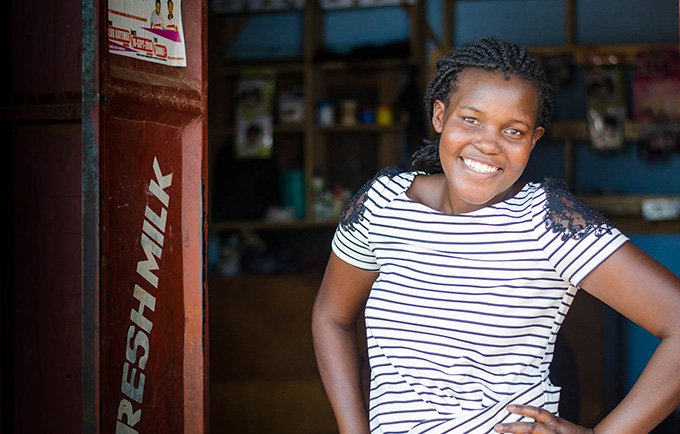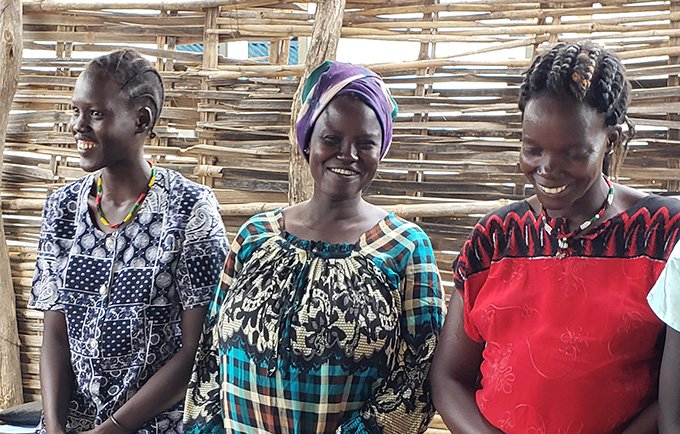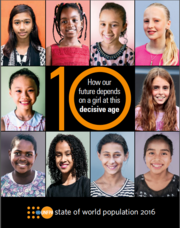Denial of rights
Child marriage denies girls the right to choose whom and when to marry – one of life’s most important decisions. Choosing one's partner is a major decision, one that should be made freely and without fear or coercion. On this, virtually all countries agree.
Despite near-universal commitments to end child marriage, 21 per cent of girls are married before age 18, an average of tens of thousands of girls every single day. Five per cent of girls are married before age 15.
Impact on a girl’s health, future and family
Child marriage directly threatens girls’ health and well-being. Marriage is often followed by pregnancy, even if a girl is not yet physically or mentally ready. In developing countries, nine out of 10 births to adolescent girls occur within a marriage or a union. In these countries, complications from pregnancy and childbirth are the leading cause of death among adolescent girls aged 15 to 19.
Girls who are married may also be exposed to sexually transmitted infections, including HIV. When girls marry, they are often forced to drop out of school so they can assume household responsibilities. This is a denial of their right to an education. Girls who leave school have worse health and economic outcomes than those who stay in school, and eventually their children fare worse as well.
Factors contributing to child marriage
Child marriage is the toxic product of poverty and gender inequality. Girls in child marriages tend to be less educated, and they are more likely to live in rural areas. Many impoverished parents believe that marriage will secure their daughters’ future by ensuring that another family will be responsible for their care. This is also true in humanitarian crises, when many parents fear they will be unable to protect or care for their daughters. Some mistakenly believe marriage will protect their daughters from sexual violence, which is often exacerbated in times of crisis.
Some parents see their daughters as burdens or commodities. Dowries complicate the issue: In places where the bride’s family pays a dowry to the groom’s family, younger brides typically command smaller dowries, creating an incentive for parents to marry their daughters off early. In places where the groom’s family pays a bride price, parents in difficult circumstances may marry off their daughters as a source of income.
More often than not, child marriage is the outcome of having few choices. When girls have a choice, they marry later.
How to end child marriage
Global child marriage rates are slowly falling. Recent data show that 25 million child marriages were prevented in the last decade. Around 2000, one in three women between the ages of 20 and 24 reported they had been married as children. In 2018, this number is around one in five.
Still, progress has been uneven, and child marriage is not declining fast enough. Because of population growth in regions where child marriage is more prevalent, the total number of child marriages is projected to increase by 2030. To change this, we must accelerate our actions to end child marriage.
Ending child marriage requires action at many levels. Existing laws against child marriage should be enforced, especially when girls at risk of child marriage, or who are already married, seek protection and justice. And where it is not yet the case, the legal age of marriage should be raised to 18. But laws only provide the framework for action against child marriage. Practices people deem acceptable are unlikely to disappear through legislation alone.
Governments, civil society and other partners must work together to ensure girls have access to education, health information and services, and life-skills training. Girls who are able to stay in school and remain healthy enjoy a broader range of options, and they are more likely to be able to avoid child marriage.
And, importantly, girls who are already married need to be supported. Married girls need reproductive health services to help them avoid early pregnancy. Those who become pregnant need access to appropriate care throughout pregnancy, childbirth and in the post-partum period. They should be supported, if they choose, in returning to formal or non-formal school.
Together, these measures lead to healthier families, higher levels of gender equality and, in turn, stronger societies and more vibrant economies. No society can afford the lost opportunity, waste of talent, or personal exploitation that child marriage causes.
UNFPA’s role
UNFPA is committed to delivering concrete, evidence-based solutions to child marriage, with an emphasis on efforts that can be scaled-up, sustained and produce measurable results. UNFPA works with governments and civil society partners, at all levels, to promote and protect the human rights of girls, including assisting with the development of policies, programmes and legislation to address and curtail the practice of child marriage. Many of these efforts, such as the Action for Adolescent Girls programme and the UNFPA-UNICEF Global Programme to Accelerate Action to End Child Marriage, empower girls to know and exercise their human rights, including their right to choose, as adults, whom to marry.
Last updated 1 May 2018








